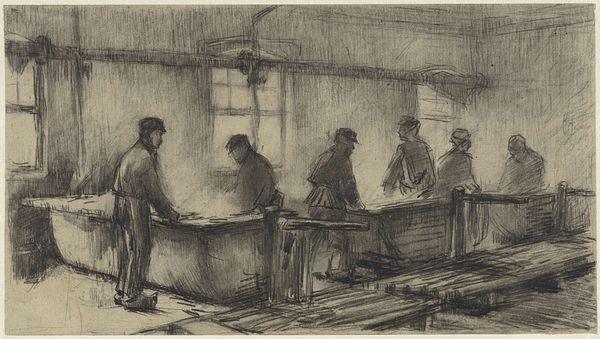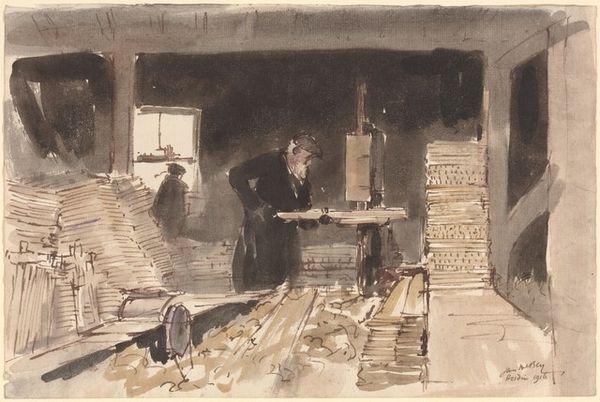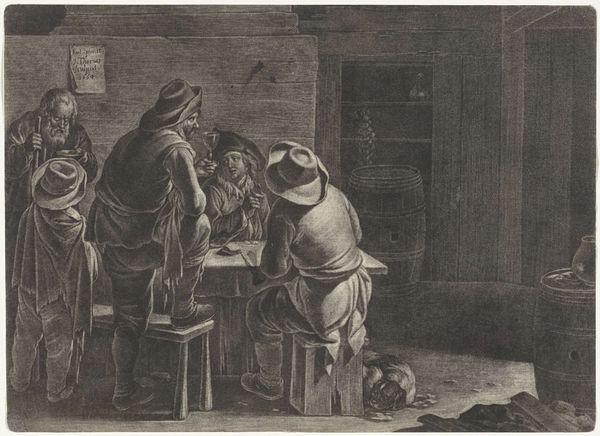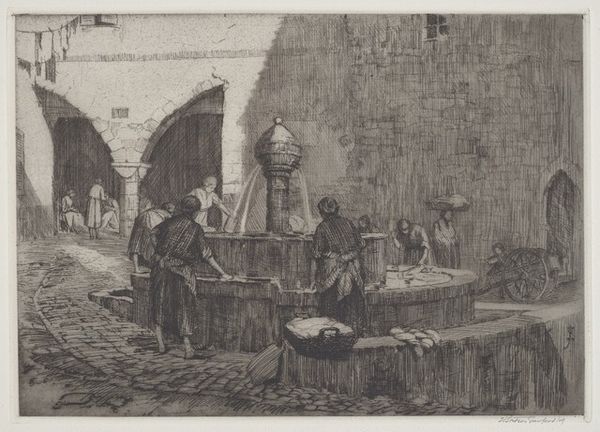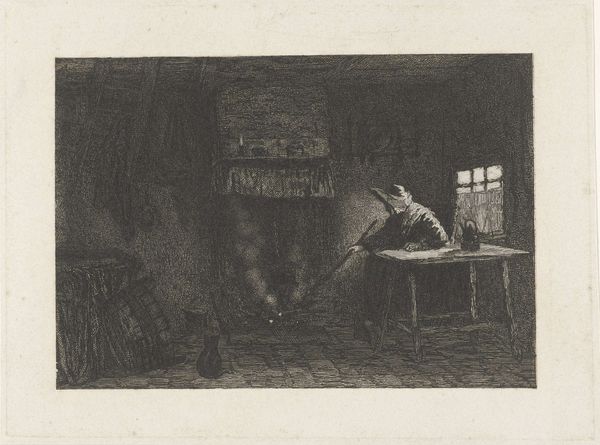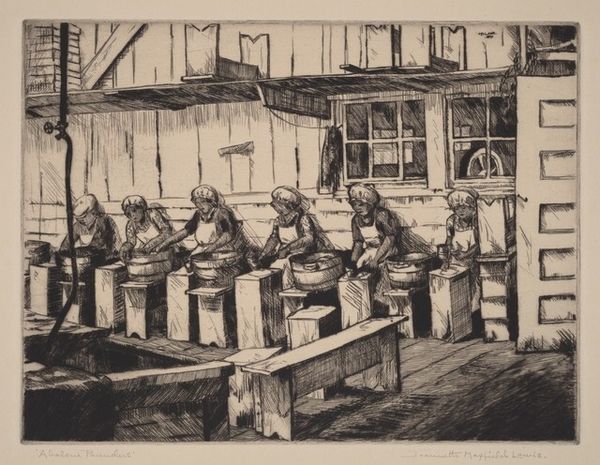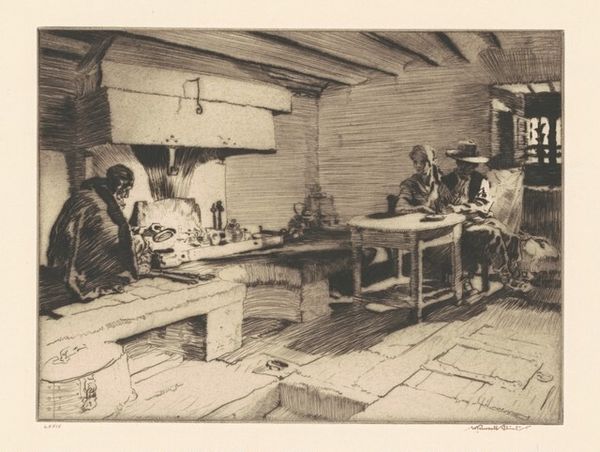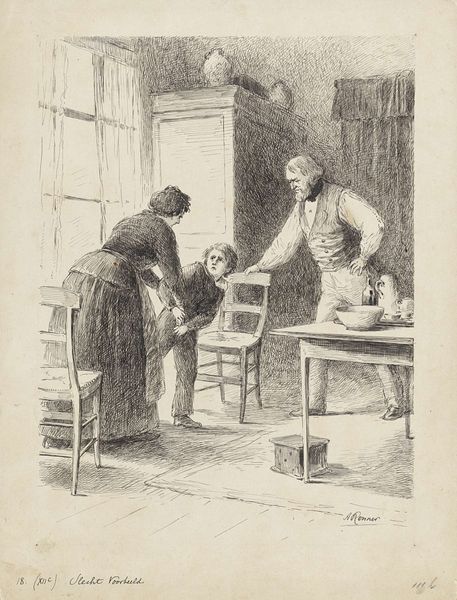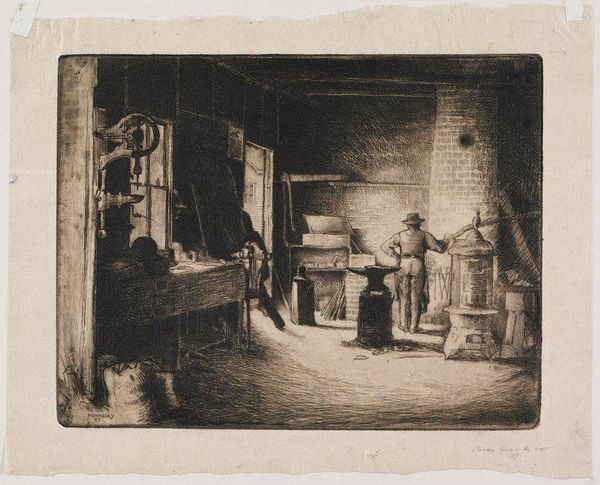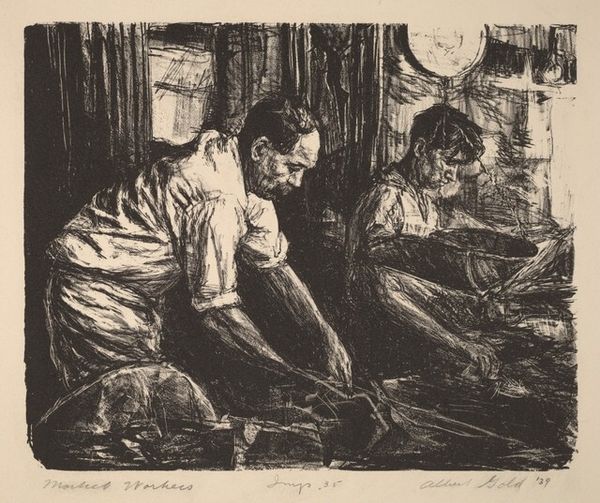
drawing, ink, pencil, graphite, pen
#
drawing
#
dutch-golden-age
#
pen sketch
#
pencil sketch
#
ink
#
pen-ink sketch
#
pencil
#
graphite
#
sketchbook drawing
#
pen
#
genre-painting
#
academic-art
#
realism
Dimensions: height 153 mm, width 293 mm
Copyright: Rijks Museum: Open Domain
Editor: This drawing, "De krabbers in de katoenververij" – "The Scrapers in the Cotton Dye Works" – created between 1868 and 1892 by Anthon Gerhard Alexander van Rappard using graphite, pencil, pen, and ink. The scene has a very somber mood, all these workers in the factory… How do you interpret this work in the broader social context of the late 19th century? Curator: This piece offers a fascinating glimpse into the burgeoning industrial era and its impact on the working class. Rappard, though a friend of Van Gogh, had his own commitment to social realism. Here, the repetitive, almost mechanical actions of the workers, captured in stark lines and shadows, speaks to the dehumanizing conditions of factory labor. Editor: Dehumanizing, yes. Is Rappard making a direct political statement here, or is he merely documenting the reality he observes? Curator: It's a delicate balance. Artists like Rappard were often influenced by socialist ideologies gaining traction at the time. They sought to bring attention to the plight of the working class. The fact that he chooses this scene, these people, and meticulously renders their environment invites a political reading. Are these images of empathy, exploitation, or something in between? Editor: The light, coming from the windows. Is there any symbolism related to it? Curator: That's a keen observation. Windows, often interpreted as a beacon of hope. Yet, the workers are facing the other direction, heads down, and deeply absorbed in their own works. I wonder what other readings this picture might convey about the industrial age, technological progress, and its intended effect on the public. Editor: I see. Thanks, this makes me look at the picture with a very different angle. It gives a really deep dive into the working condition in that time. Curator: It highlights art's capacity to make social commentary. Even in what seems like a simple sketch.
Comments
No comments
Be the first to comment and join the conversation on the ultimate creative platform.

